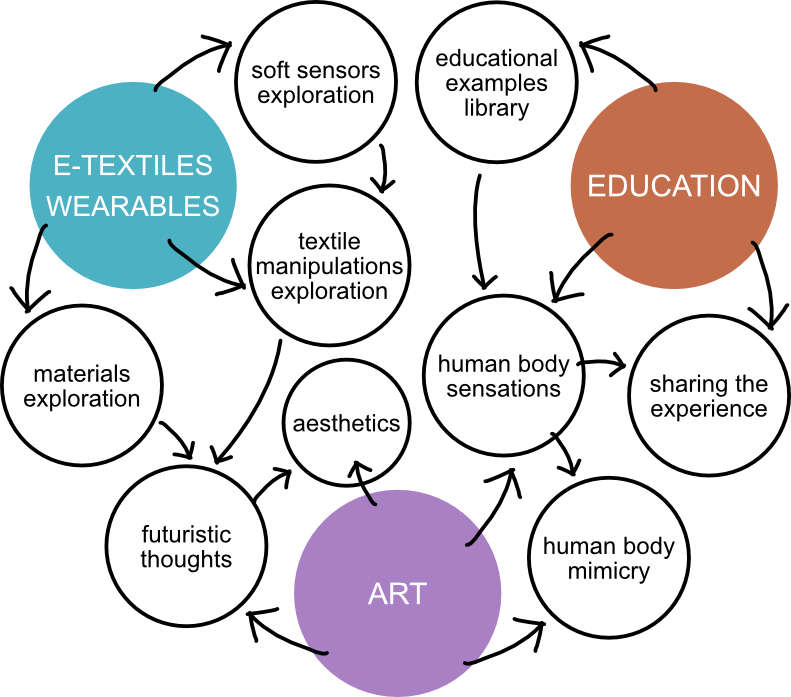11. IMPLICATIONS and APPLICATIONS¶
Choosing an idea for the final project was really not an easy task. Especially since during the course, every week kept surprising me with new discoveries that made my mind explode.
After much deliberation, I selected the direction of e-textiles, and more specifically, soft sensors. It was also important to me that it would be educational material about textile soft sensors.

REFERENCES & INSPIRATIONS¶
In the picture below are my inspirations, from the left: Bart Hess, Hunt for High Tech, Ying Gao: polymorphic robotic garments that simulate the effects of virtual clothing, Elaine Yan Ling Ng works in textiles, electronics, biomimicry, interiors, and installations, KOBAKANT DIY wearable technology documentation and Chromat adrenaline dress powered by Intel is composed of 3-D printed panels designed and an interlinked, expandable carbon fiber framework.

RESEARCH & IDEATION¶

The human body would not survive without water, food, and the second skin – clothes.
If the second skin could feel and react to human sensations and at the same time transmit the received information?
This project aims to mimic the human body and its sensors in design shape using textile materials and electronics.
The technical goal is to create soft sensors library following human sensations.
MATERIALS & METHODS¶
My goal in this project is to explore and create soft sensors with controllers and frame them in the aesthetic human body and skin mimicry using manipulated fabrics. Each sensor would be 200×200 mm in size with a separate controller and power source, so it would be possible to demonstrate it independently. All sensors together would lay down into one map.

IDEA & APPLICATIONS¶
The idea is to create a kit of textile electronics that can then be used in several ways. One way is to demonstrate sensors created by combining electronics and textiles so that people can test and explore their senses. The second way would be to do workshops and replicate these examples following the documentation and examples provided.
A more ambitious goal would be to create such documentation that the user can easily use and choose the complexity of the object according to his needs.
| EDUCATION | ART | MEDICAL |
|---|---|---|
| Kids, Schools, Universities, Science | Dance, Theatre, Performance, Contemporary, Museum, Libraries | Body mapping story telling, Hospitals, Therapy, Psychiatry |
The picture bellow is an example of a body-map storytelling methodology that was the main inspiration. GASTALDO et al., 2012a, p.16 from the article Body-Map Storytelling as a Health Research Methodology: Blurred Lines Creating Clear Pictures.
